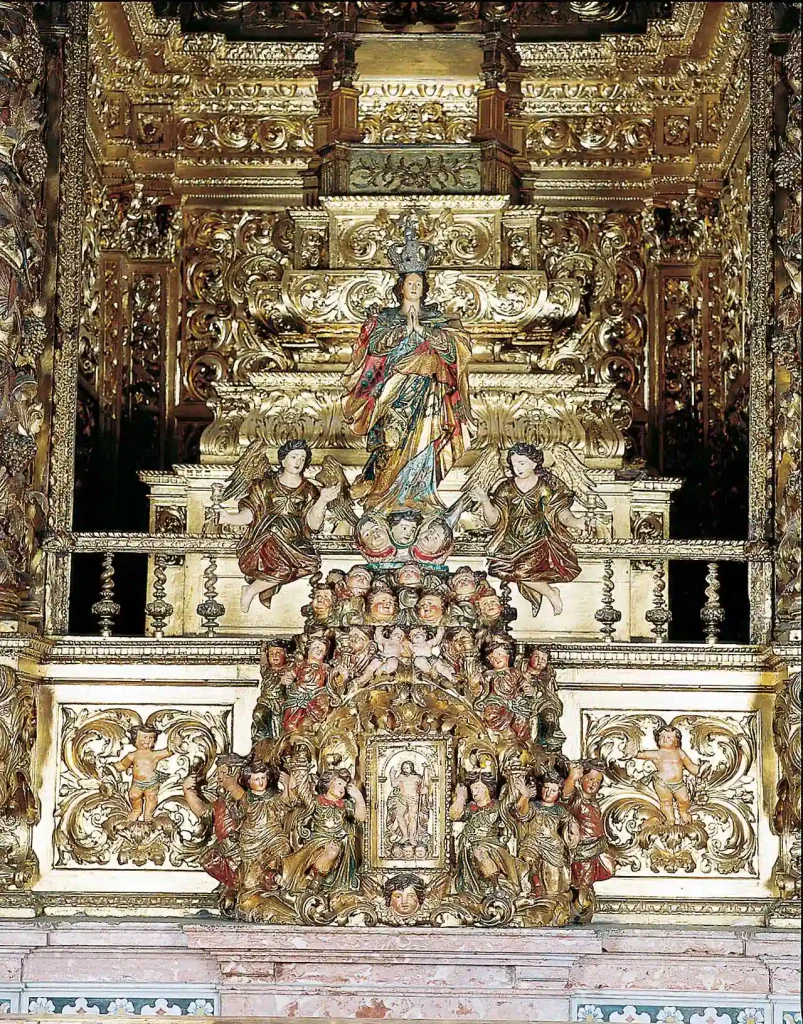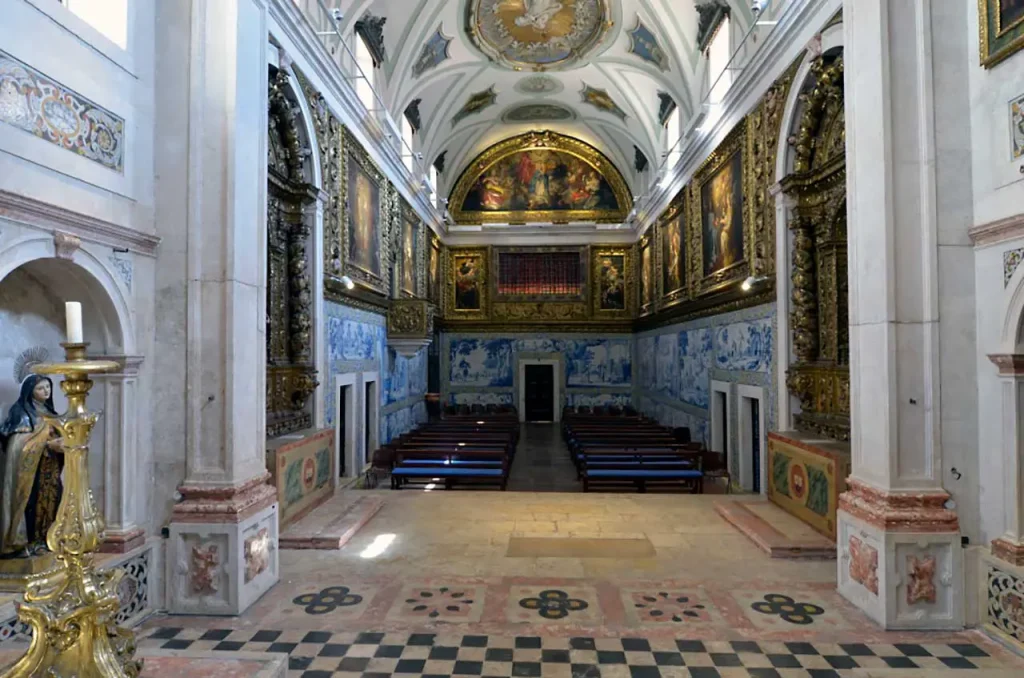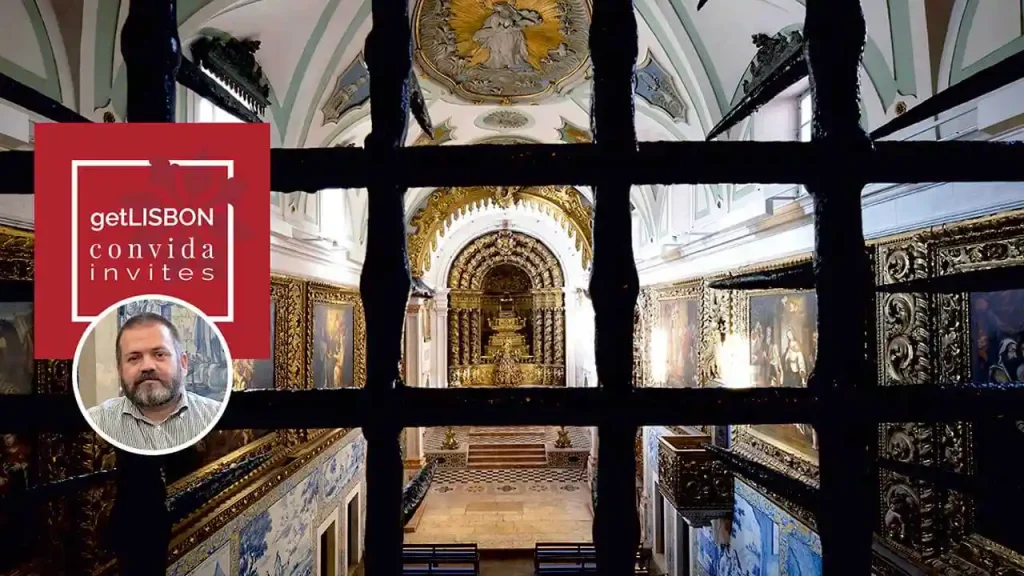getLISBON invites is pleased to present the article Cardaes Convent: History, Spirituality and Heritage, written by Mário Gomes, Director of the Museum of this institution, to whom we extend our sincere thanks.
As you will see, this place holds a very rich history: the origins of its foundation, its occupation throughout time and its remarkable artistic and heritage collection.
Cardaes Convent embodies the memory of centuries of resilience, spirituality and artistic expression that deserve to be known.
Cardaes Convent, located in the heart of Lisbon, is one of the rare convent buildings that survived the 1755 earthquake. This unique place is closely linked to the reform of the Carmelite Order promoted by Saint Teresa of Ávila and has played an important role over the centuries in the city’s spiritual, artistic and social life. Today, it remains a symbol of resistance, not only to the forces of nature but also to political changes throughout history, preserving a valuable cultural legacy.
Saint Teresa of Ávila’s Reform
In the 16th century, the Carmelite Order was experiencing a period of spiritual decline and relaxed discipline. Saint Teresa of Ávila (1515–1582), a central figure in Christian mysticism and Spanish spirituality, proposed a deep reform of the order, based on a return to simplicity, evangelical poverty and strict enclosure. Inspired by a life of prayer and seclusion, she founded the first reformed convent in Ávila in 1562: the Convent of Saint Joseph.
This reform movement became known as the Teresian Reform, or the Discalced Carmelites, and was later supported by Saint John of the Cross. The communities founded under this reform followed a more austere rule, centred on contemplation, silence and strict communal life — essentially a return to the origins of the Carmelite Order. This spirituality spread rapidly through Spain and Portugal and influenced the foundation of various convents, including Cardaes Convent in Lisbon.
Foundation of Cardaes Convent, Carmelite Life and Resistance to the 1755 Earthquake

Cardaes Convent was founded in 1681 at the initiative of D. Luísa de Távora. After being widowed, she entered the Convent of Todos os Santos in Lisbon. Possibly feeling out of step with the form of spirituality practised there, she requested authorisation from King Pedro II and the Holy See to establish a new convent — Cardaes Convent — on land that belonged to her family and where, in the 16th century, a women’s retreat had been built. The memory of that earlier building lives on today in the preserved cloister that once formed part of it.
The building’s design is attributed to the architect João Nunes Tinoco, and the church was completed in 1703. However, the convent underwent several phases of construction throughout the first half of the 18th century. The two oratories on the convent’s staircase and the decoration of the upper choir — the last artistic additions before the earthquake — are thought to have been carried out between 1745 and 1755. These works naturally do not include the repairs and reconstruction made after the 1755 earthquake.
The convent was intended for the Discalced Carmelite nuns, who lived in strict enclosure according to the Teresian ideals of prayer, penance and poverty.
Life in the convent was marked by liturgical prayer, personal meditation, manual work and silence. The nuns lived separated from the outside world, devoting themselves entirely to spiritual life. The building was designed to support this ideal: austere on the outside, but internally rich in artistic detail that raised the soul to contemplation of the divine.
On 1 November 1755, Lisbon was devastated by one of the most destructive earthquakes in European history. Thousands of buildings collapsed, including many convents and churches. Miraculously, Cardaes Convent survived.
The Nossa Senhora Consoladora dos Aflitos Association, the Asylum for Blind Women and Cardaes Convent Today

With the extinction of religious orders in Portugal in the 19th century, many convents were closed or repurposed. In 1876, following the death of the last Carmelite nun residing at Cardaes, the Nossa Senhora Consoladora dos Aflitos Association — founded in 1848 — submitted a request to take over the convent. The goals were to provide a headquarters for the Association and a home for blind women who had been marginalised by society. At the same time, this prevented yet another convent from closing, and allowed the surrounding community to continue using the site as a place of prayer and to attend Mass.
The Asylum for Blind Women was placed under the care of the Dominican Sisters of Saint Catherine of Siena, a congregation founded in 1868 by Teresa Saldanha de Oliveira e Sousa (Mother Teresa of Saldanha). It is these Dominican Sisters who, more than a century later, still oversee the daily running of the convent, ensuring a dignified life for the women who live there.
For over a hundred years, the Association has preserved the social and spiritual mission of the former convent. The building has been carefully maintained and restored, allowing its original character to endure. Even in times of financial hardship, the commitment to its mission and to heritage preservation was never abandoned.
Today, Cardaes Convent remains under the care of the Nossa Senhora Consoladora dos Aflitos Association. It is open to the public for guided tours and also serves as a cultural centre. The former convent hosts events, concerts, exhibitions and educational activities that promote knowledge of religious and artistic heritage.
In addition, its commitment to social service continues: it houses adult women with disabilities, in a model adapted to modern social and technological realities. In this way, the convent remains faithful to its mission of serving the most vulnerable.
Baroque and Dutch Tiles: the Artistic Brilliance of Cardaes Convent

Cardaes Convent is now considered one of the finest examples of Baroque architecture in Portugal. In contrast to its modest exterior, the interior is rich in decorative elements that reflect the Baroque aesthetic: exuberance, symbolism and drama.
The convent church is a true artistic treasure. The main altarpiece, carved in gilt wood, was possibly created by the workshop of woodcarver José Rodrigues Ramalho1. Its grand and detailed composition draws the viewer’s gaze to the altar, the centre of liturgical life, and is framed by paintings attributed to Bento Coelho da Silveira, one of the most important painters of the Portuguese Baroque.

One of the most remarkable features of the convent is its 17th-century Dutch tile panels. Commissioned from Jan van Oort, these tiles depict scenes from the life and mysticism of Saint Teresa of Ávila in the traditional blue-and-white style typical of Dutch ceramics from that period. Their presence in a Portuguese convent also reflects the commercial and cultural connections between the Netherlands and Portugal, as well as the desire to beautify sacred spaces with didactic and contemplative elements.

These tiles, along with the paintings by António Pereira Ravasco and André Gonçalves, and the gilded woodwork, form a collection of great historical and artistic value. The austerity of Carmelite life did not prevent the careful adornment of prayer spaces — indeed, this was seen as a way of glorifying the divine.

Conclusion
Cardaes Convent is a remarkable example of how spirituality, art and solidarity intertwine in Portuguese history. Founded in the spirit of the Teresian reform, it has survived centuries of change, including the 1755 earthquake and the political upheavals of the 19th century. Today, it remains a living space, honouring its past and responding to the needs of the present. Its Baroque church, Dutch tiles and enduring social mission make Cardaes Convent a unique place of memory, beauty and compassion in the heart of Lisbon.
1MECO, José. A Divina Cintilação in Convento dos Cardaes – Veios da Memória. Lisboa: QUETZAL EDITORES, 2003. p. 131
| Never miss another article | Subscribe here |
BIBLIOGRAPHY AND WRITTEN SOURCES
ASSOCIAÇÃO NOSSA SENHORA CONSOLADORA DOS AFLITOS – Relatórios anuais. Original sources. Cardaes Convent, reports consulted between 1876 and 1880.
SAENZ, Solana Longinos – Pensamentos, Santa Teresa de Jesus. Alfragide: Publicações D. Quixote, 2015.
TERESA DE ÁVILA, Santa – Livro da vida. Accessed online on 10 June 2025: Santa Teresa de Jesus LIVRO DA VIDA
VIEIRA, Irmã Ana Maria; RAPOSO, Teresa, coord. – Convento dos Cardaes – Veios da Memória. Lisboa: QUETZAL EDITORES, 2003.

Mário J. F. Gomes (b. 1980) holds a degree in History and a master’s in Museology from ISCTE. He has extensive experience in leading heritage institutions such as the Monastery of Batalha, the Jerónimos Monastery, and the Belém Tower. He worked as a Cultural Manager at the company Histórias ao Minuto – STORIC, where he developed educational programmes and created the Interpretative Centre of the Casa do Alentejo. Since 2022, he has been the Director of the Museum of the Cardaes Convent.




